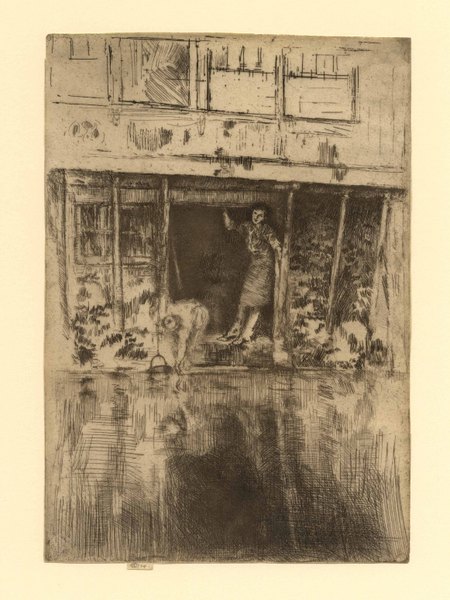Pierrot
James Whistler (1834-1903), Pierrot, 1889, etching, printed in brown on fine laid paper; trimmed to the platemark by the artist, signed with the butterfly and inscribed imp on the tab, also signed with the butterfly and inscribed verso [also with the butterfly in the plate, upper left]; Kennedy 407, fourth state (of five); Glasgow 450, sixth state (of eight) (cf. Margaret F. MacDonald, Grischka Petri, Meg Hausberg, and Joanna Meacock, James McNeill Whistler: The Etchings, a catalogue raisonné, University of Glasgow, 2011); Lochnan 408, 9 x 6 1/4 inches. Pierrot was never published, although it was clearly intended to be part of a (never published) Amsterdam Set. In very good condition.
Provenance:
James L. Claghorn (with [faint] stamp verso, Lugt 555c)
Also signed on the verso in pencil with the butterfly and inscribed “selected for [unclear but probably “Wunderlich”; several impressions were sent to Wunderlich, Whistler’s US dealer]
Also with initials RGO (?) in pencil, lower left verso (not identified in Lugt)
A very fine, evenly balanced impression, printing with subtle plate tone. Printed in a brownish/black ink on an ivory laid paper.
This state is before the small patches of shading were added below the windows to the left of the main doorway.
Apparently Whistler regarded Pierrot as his favorite among the Amsterdam plates. In a letter to Whistler Howard Mansfield, the famed collector, wrote: “The impression you showed me of “Pierrot” is so fine…that I feel that I must have it. The fact that it is your favorite among the Amsterdam plates makes me wish to possess it in its greatest beauty.”
The scene shows dyers on the Oudezijds Achterburgwal in Amsterdam. Although titled Pierrot or The Pierrot, and this character from the 17th Century Italian Commedia Dell’arte was experiencing a revival of interest in the late 1800’s, there is nothing apparent in the composition to suggest the fictional character; the figures depicted are workers, the main one simply a young boy wearing an apron, the other a woman rinsing a cloth in the canal.
As in the other Amsterdam views, the dark, tonal areas are no longer created purely by selective wiping – although there is much such wiping evident in the print – but by the extraordinarily dense networks of overlapping lines.
